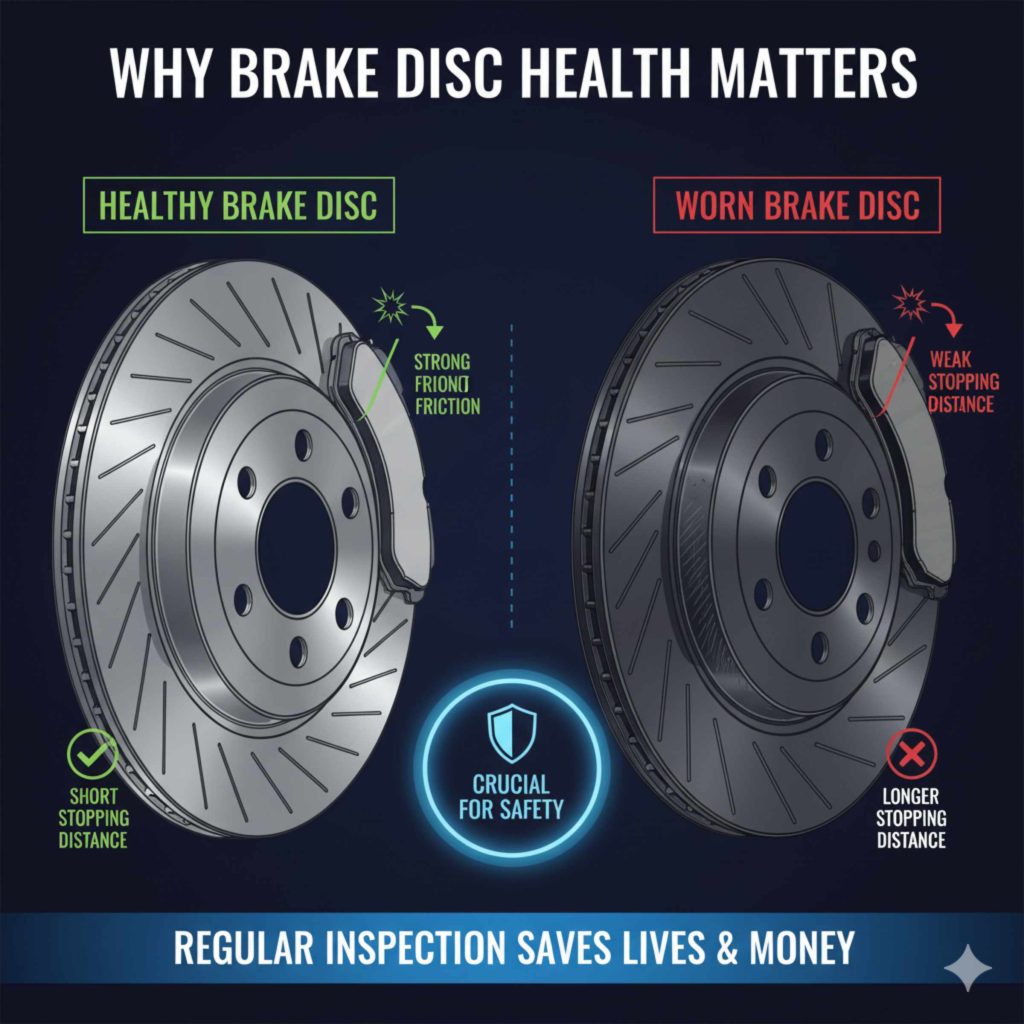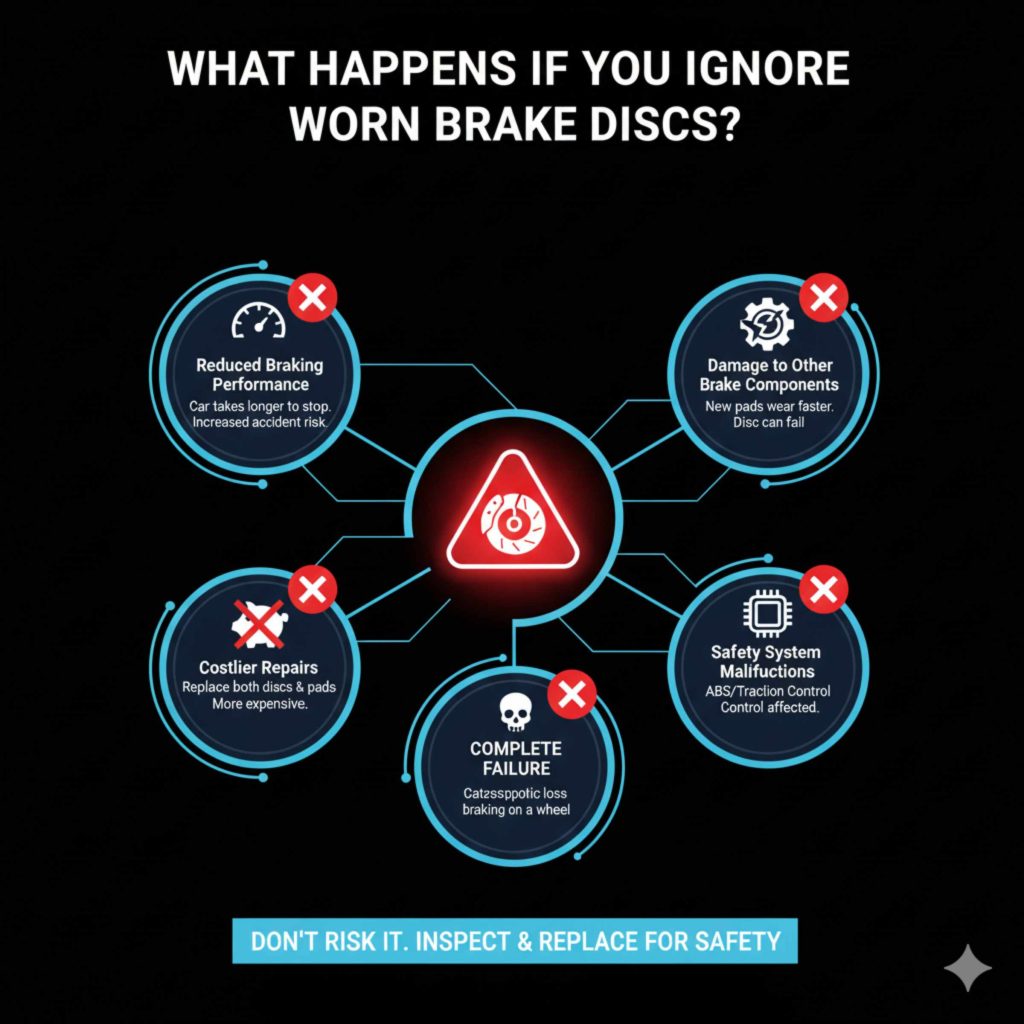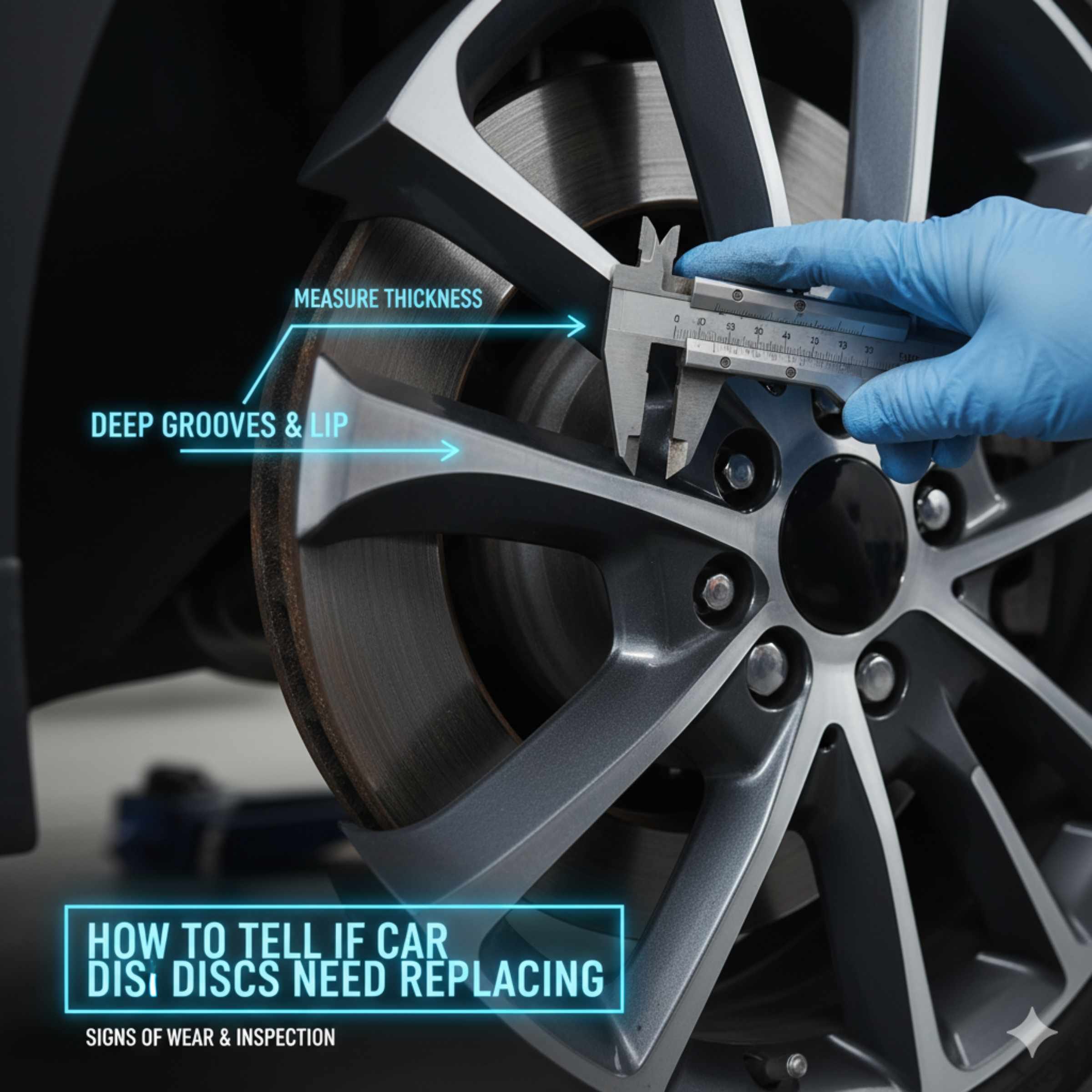Quick Summary:
Watch out for a grinding noise, pulsation in the brake pedal, a soft brake pedal, and visible wear on your brake discs. These are key signs your car brake discs might need replacing to ensure safe stopping power.
Having your car suddenly refuse to stop when you need it to is a scary thought. Your brakes are one of the most important safety systems in your vehicle, and their ability to work effectively relies heavily on components like brake discs (also called rotors). Over time, these discs can wear down, and knowing the signs that indicate they need replacing is crucial for your safety and the longevity of your car. This guide will make it easy to spot these signs, even if you’re new to car maintenance.
Don’t worry if you’re not a seasoned mechanic. We’ll break down exactly what to look and listen for, explaining everything in simple terms. By the end of this article, you’ll feel confident in identifying when your brake discs are telling you it’s time for a change, preparing you to keep your car stopping safely and reliably.
Why Brake Disc Health Matters
Brake discs are the metal plates that sit behind your wheels and work hand-in-hand with your brake pads. When you press the brake pedal, the brake pads clamp down on these discs, creating friction. This friction is what slows your car down and eventually brings it to a halt. Think of them like the gripping surface for your car’s “grip strength.”
If these discs become worn, damaged, or warped, that friction isn’t as effective. This means longer stopping distances, which can be dangerous in an emergency. Plus, worn discs can damage your brake pads faster, leading to more expensive repairs down the road. Regularly checking your brake discs is a simple way to stay safe and save money.

The Top Signs Your Car Brake Discs Need Replacing
Spotting worn brake discs doesn’t require a mechanic’s intuition. Your car often gives you clear signals when something isn’t right. Here are the expert signs to look out for:
1. Grinding Noises While Braking
This is often the most alarming sign. If you hear a loud, metal-on-metal grinding sound whenever you apply the brakes, it’s a strong indicator that your brake pads have worn down completely and are now grinding against the brake disc itself. This is a critical warning sign that needs immediate attention.
What it sounds like: A harsh, scraping, or screeching noise that is significantly louder and different from the typical squeaking of brake pads. It’s a sound that’s hard to ignore and usually gets worse the longer it’s left.
2. Pulsation or Vibration in the Brake Pedal
When you press the brake pedal, do you feel a pulsating sensation, like the pedal is vibrating or kicking back at your foot? This is often caused by warped brake discs. Over time, heat from braking can cause the metal discs to become uneven, leading to this rhythmic vibration.
What it feels like: A distinct trembling or pulsing sensation through your foot as you apply the brake. This feeling can vary from subtle to quite strong.
3. A Softer or Spongy Brake Pedal
Your brake pedal should feel firm when you press it. If it feels softer than usual, or if you have to press it further down than you normally would before the brakes engage, this could mean your brake discs are worn, or there might be an issue with the brake fluid or braking system itself. While not always directly a disc issue, it’s often related to the overall brake system’s health, which includes the discs.
What it feels like: The pedal sinks lower towards the floor, and it doesn’t feel as solid or responsive as it used to. It might feel like you’re pushing through something soft.
4. Visible Wear and Tear on the Brake Discs
Sometimes, the best way to tell is by looking. If you can safely inspect your brake discs, you might see clear signs of damage or wear.
- Grooves or Scoring: Your discs should have a relatively smooth surface. If you notice deep grooves or scoring marks running across the surface, this indicates wear or damage.
- Blue or Discolored Patches: Overheating can turn the metal a blueish or purplish color. This is a sign the disc has been subjected to excessive heat, which can weaken the metal and lead to warping.
- Cracks: Small cracks can appear on brake discs, especially after heavy braking or if they’ve overheated. Any visible cracks are a serious safety concern and mean the disc needs immediate replacement.
- Thinness: Brake discs have a minimum thickness requirement. As they wear down, they become thinner. Over time, they can reach a point where they are too thin to function safely. We’ll discuss how to check this later.
5. Wobbling While Driving or Braking
If you notice that your car seems
to wobble or shake when you’re driving, especially when you’re not even braking, it could be a sign that one or more of your brake discs are severely warped or uneven. This is a less common symptom specifically for bad discs, but it’s directly related to their condition and overall wheel balance.
6. The “Lip” on the Edge of the Disc
As brake discs wear, the outer edge can develop a raised lip. This happens because the brake pads don’t contact the very edge of the disc, leaving a small amount of unworn material. While a small lip might be normal, a very prominent or sharp lip is a sign that the disc has significantly thinned and worn down.
How to Inspect Your Brake Discs: A Beginner’s Guide
Checking your brake discs doesn’t require advanced tools or expertise. With a little care and attention, you can perform a basic inspection. Always ensure your car is safely parked on a level surface and engage the parking brake. If you’re unsure about any step, it’s always best to consult a professional mechanic.
Step 1: Visual Inspection
This is the easiest step. You’ll need good lighting, such as a flashlight. You can usually see the brake discs through the spokes of your wheels. If you can’t see them clearly, you might need to remove the wheel for a thorough inspection, but for basic signs, looking through the wheel is often enough.
- What to look for:
- Are the discs shiny and relatively smooth, or do they have deep grooves and rough patches?
- Do you see any dark blue or purplish discoloration, indicating overheating?
- Are there any visible cracks on the surface of the disc?
- Can you see a significant lip or raised edge on the outer circumference?
Step 2: Check for the “Lip”
Run your finger (carefully, as parts might be hot if recently driven!) or use the tip of a tool around the outer edge of the brake disc. You should feel a slight lip. If you feel a sharp or very pronounced lip, it’s a good indicator that the disc is worn and nearing its minimum thickness.
Step 3: Listen During Braking
Pay close attention to the sounds your car makes when you brake. As mentioned earlier, grinding or heavy scraping noises are red flags. Even a consistent, high-pitched squeal could indicate worn pads touching the disc.
Step 4: Feel the Brake Pedal
Test the brake pedal feel. Does it feel firm and responsive, or is it soft, spongy, or does it pulsate under your foot? Regularly paying attention to how your brakes feel can help you notice subtle changes early on.
Step 5: Check the Minimum Thickness (Advanced Beginner)
Brake discs have a minimum thickness specification set by the manufacturer. This information is often stamped on the disc itself (called the “min thickness” or “min TH”) or can be found in your car’s service manual. You’ll need a caliper tool (a relatively inexpensive measuring tool) to do this accurately.
How to use a caliper:
- Ensure the brake disc is cool.
- Measure the thickness of the disc at several points around its surface. Try to measure across the braking surface, avoiding the outer lip if it’s significant.
- Compare your measurement to the minimum thickness stamped on the disc or listed in your car’s manual.
- If your measurement is close to or below the minimum thickness, the disc needs replacing.
Where to find information:
Your vehicle’s owner’s manual is the first place to look for specific specifications. For more detailed technical information, resources like NHTSA (National Highway Traffic Safety Administration) offer safety standards and general vehicle information that can be helpful.
Brake Disc Wear vs. Brake Pad Wear
It’s important to understand that worn brake pads and worn brake discs often go hand-in-hand, but they are distinct components with different wear indicators.
Brake Pads: These are the friction material that presses against the discs. They wear down more quickly than discs. Most pads have small metal “wear indicators” that create a high-pitched squeal when the pad material is low. Grinding noises usually mean the pads are completely gone, and the metal backing plate is hitting the rotor.
Brake Discs (Rotors): These are the metal plates. They wear down more slowly but can warp or get grooves. If you hear grinding, your pads are likely shot, and the discs are probably being damaged too. If you feel pulsation, it’s almost always the discs.
Summary Table: Signs of Disc vs Pad Wear
| Symptom | Likely Cause | Component to Inspect/Replace |
|---|---|---|
| High-pitched squeal during braking | Worn brake pads (wear indicator exposing metal) | Brake pads |
| Loud grinding or scraping noise during braking | Brake pads completely worn down, metal backing plate grinding on disc | Brake pads AND Brake Discs |
| Pulsation or vibration in brake pedal | Warped or uneven brake discs | Brake Discs |
| Soft or spongy brake pedal | Can be low brake fluid, air in the system, or worn components affecting hydraulic pressure (including worn discs/pads) | Brake fluid, brake lines, master cylinder, brake pads, brake discs |
| Visible grooves, scoring, or deep wear on shiny metal surface | Wear and tear over time, often exacerbated by driving conditions or debris. | Brake Discs |
| Significant lip on the outer edge of the disc | Disc has worn down considerably and is thinning. | Brake Discs |
When to Replace Both Discs and Pads
In most cases, if your brake discs show signs of needing replacement, your brake pads are also likely worn to a similar degree, or even beyond. It’s generally recommended to replace brake pads and discs together as a set.
Why? Because new pads bedding in against worn or warped discs won’t perform optimally and can even cause premature wear on the new parts. Likewise, fitting new discs with worn-out pads means the new discs will quickly be subjected to the same forces that wore the old pads down.
This symbiotic relationship ensures your braking system works efficiently and safely. Think of it like replacing the tires on your car – you wouldn’t put brand new tires on rims that are bent, would you?
The Impact of Driving Habits on Brake Disc Life
Your driving style can significantly affect how long your brake discs last. Aggressive driving, for example, will lead to faster wear.
- Hard Braking: Frequent and hard stops generate a lot of heat, which can warp discs and accelerate wear.
- Riding the Brakes: Constantly resting your foot on the brake pedal, even lightly, causes friction and heat buildup when it’s not needed.
- Long Downhill Descents: Prolonged braking on steep grades can easily overheat your discs. Using lower gears to control speed on descents is a good practice.
- Driving in Wet or Gritty Conditions: While modern discs are designed to handle some moisture, constant exposure to salt, sand, and mud can accelerate corrosion and wear.
Being mindful of these habits can help extend the life of your brake discs and other brake components.
What Happens If You Ignore Worn Brake Discs?
Ignoring the signs that your brake discs need replacing is a serious risk. Here’s what can happen:
- Reduced Braking Performance: This is the most immediate and dangerous consequence. Your car will take longer to stop, increasing the risk of accidents.
- Damage to Other Brake Components: Worn discs can severely damage new brake pads, leading to premature failure. In extreme cases, severely worn or cracked discs can even fail catastrophically, potentially leading to a loss of braking power on that wheel.
- Costlier Repairs: If you let your brake pads grind into the discs, you’ll likely need to replace both, which is more expensive than replacing just worn pads or slightly worn discs.
- Safety System Malfunctions: Modern cars often have sophisticated anti-lock braking systems (ABS) and traction control. These systems rely on the brake components functioning correctly; worn discs can interfere with their operation.
For more information on brake system safety and maintenance, you can refer to resources from organizations like the Insurance Institute for Highway Safety (IIHS), which often covers vehicle safety research.

FAQs About Brake Disc Replacement
Q1: How often should I check my car brake discs?
A: It’s a good idea to visually inspect your brake discs every time you have your tires rotated, or at least twice a year. Pay close attention to any new noises or feelings from your brakes.
Q2: Can I drive with warped brake discs?
A: While you might be able to drive, it’s not safe. Warped discs reduce your braking effectiveness and can worsen over time. It’s best to address this issue as soon as you notice pedal pulsation or vibration.
Q3: How much does it cost to replace brake discs?
A: The cost can vary widely depending on your car’s make and model, whether you buy OEM (original equipment manufacturer) or aftermarket parts, and your location. Generally, expect to pay anywhere from $200 to $600 or more per axle (front or rear) for parts and labor. Replacing just pads is typically less.
Q4: How long do brake discs usually last?
A: Brake discs can last anywhere from 30,000 to 70,000 miles, or even more, depending on driving habits, the quality of the discs, and the vehicle. They often wear out at a similar rate to your brake pads, but discs are designed to last longer than pads.
Q5: Do I need to replace brake discs if they’re just a little rusty?
A: A light surface rust on brake discs is normal, especially if the car has been sitting or driven in wet conditions. This usually cleans off with the first few brake applications. However, deep pitting, heavy scaling, or rust that fuses to the disc surface indicates a problem and may require replacement.
Q6: What’s the difference between solid and vented brake discs?
A: Solid discs are solid metal plates, typically found on the rear wheels of less performance-oriented vehicles. Vented discs have internal channels or fins between the two surfaces, allowing air to flow through and cool the disc more effectively. Vented discs are common on front wheels of most cars and are better at dissipating heat, reducing the risk of warping.
Conclusion: Your Guide to Safer Braking
Understanding how to tell if your car brake discs need replacing is a vital skill for any car owner. By paying attention to the sounds, feelings, and visual cues your vehicle provides – from grinding noises and pedal vibrations to visible wear and thinness – you can proactively address potential safety issues. Remembering that brake pads and discs often need to be replaced together will ensure your entire braking system is in top condition.
Don’t let confusing car talk or the idea of DIY repairs intimidate you. With these clear, simple signs and inspection tips, you’re now equipped to identify when your car needs new brake discs. Taking this knowledge to your mechanic, or even considering a DIY replacement!

